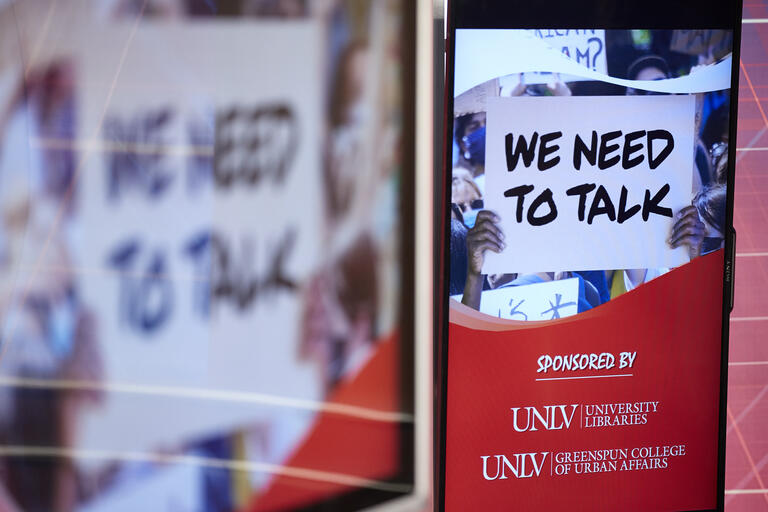When a family is torn apart because of fears for a child’s safety and welfare, it’s an agonizing process. The parents may feel dragged through the mud in court and emotions often run rampant—especially those of the child.
A cutting-edge mediation program in Nevada is helping to ease frustration and heartache for everyone involved in such cases.
UNLV William S. Boyd School of Law faculty and supporters are among those spearheading the new Juvenile Dependency Mediation program, which helps families negotiate an agreeable outcome for child abuse and neglect cases in Nevada.
A partnership between the Nevada Supreme Court, the Division of Child and Family Services and the Second Judicial District Court, the mediation program provides a forum outside the courtroom to peacefully resolve issues surrounding a child’s removal from home or the termination of parental rights, also known as the “civil death penalty.”
Successfully piloted in Washoe County, the program has now spread to all 11 of Nevada’s judicial districts.
“These cases … are extremely difficult to resolve in an adversarial litigation setting,” says Lydia Nussbaum, a UNLV Law associate professor who is also director of the law school’s Mediation Clinic and a program mediator in Southern Nevada. “No one really ‘wins’ in court. If anything, the longer the family is left in a state of legal uncertainty … the more the child loses.”
Margaret Crowley, the statewide program director for the Juvenile Dependency Mediation program and a board member for the law school’s Saltman Center for Conflict Resolution, shares a similar opinion. Crowley says the air of civility that’s usually associated with mediation is a big plus when juveniles are involved.
“There’s an opportunity to make a personal connection in mediation. It really humanizes everyone,” she says. “You don’t get those opportunities in the courtroom.”
In Southern Nevada, there are more than 3,000 children in the foster system at any given time, primarily because of neglect in the home, says Clark County Family Court Judge Frank Sullivan, who also is a UNLV Law adjunct professor.
Sullivan estimates that up to 75 percent of kids in Nevada’s system end up returning home. He notes that the ability to mediate these cases “helps out substantially.”
Oriented as a problem-solving conversation in a neutral setting, juvenile dependency mediation can occur at various stages. The process brings several parties into the fold: attorneys, social workers, parents, grandparents, foster parents, prospective adoptive parents, children—pretty much anyone who has something important to say about the case. All are able to speak candidly about the challenges they face without concern that it will later become evidence in a court proceeding.
“It puts everyone on a level playing field,” says Nussbaum, who also serves as associate director of the Saltman Center. “The participants are not opponents … but instead are focused on what kind of future arrangement will be in the child’s best interest.”
Nussbaum adds that these cases also provide valuable learning opportunities for UNLV Law students, who sometimes sit in on mediations. “Not only do they get to see how the process adapts and adjusts to different kinds of legal disputes, but they also see different parties in action,” she says.
Ultimately, the primary objective of the Juvenile Dependency Mediation program is to do right by the children.
“Whether it’s going back to be with their parents or being adopted, our goal with every child-welfare case is to try to give these children a safe, permanent and nurturing home in a timely manner,” Sullivan says.
“Mediation is the key for family engagement,” he adds. “Instead of being told what to do, the family is part of the solution.”



